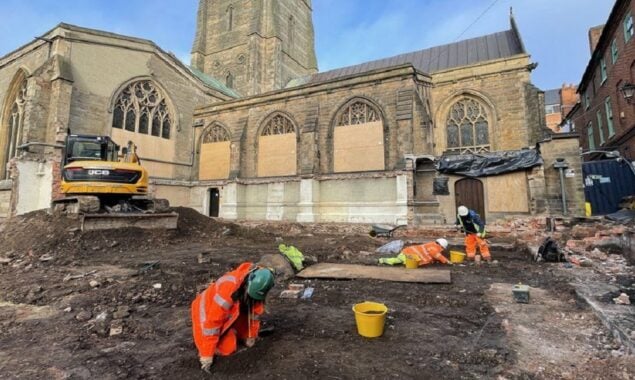
Archaeologists discovered more than 100 tombs near a city cathedral that is receiving a £12.7 million repair. Leicester Cathedral closed in January to enable the development of a visitor and learning center.
So far, approximately 125 burials have been discovered, with hundreds more predicted. Teams are also interested in learning how long it has been a place of Christian worship.
Once the renovation is completed, all of the remains will be reinterred within the cathedral grounds.
According to Matthew Morris of the University Of Leicester Archaeological Services (ULAS), the work done thus far has been “essentially simply preparation,” with hundreds more cemetery sites still to be dug.
“We have hardly scratched the surface on this one. The footprint of the new building is quite small but it’s in the area of the graveyard that is probably one of the most densely used because of its proximity to the high altar. It is probably going to have the higher elements of the parish – one of the most in-demand areas,” he said.

Mr. Morris, who conducted the excavation of King Richard III’s neighboring gravesite, said burial records suggested that 16,500 people were buried in the cemetery between around 1550 and 1850.
“There might be 800 or 1,000 years of burial in this graveyard. It’s quite astounding,” he said.
ULAS will thoroughly examine the remains discovered at the site in order to gain a better understanding of the lives of the church’s early members.
The structure has only been a cathedral since the 1920s, although it has been one of Leicester’s most important parish churches since at least the Norman Conquest, according to Mr. Morris.
The original St Martin’s Church was established in the 12th century, but it was extensively restored during the 14th and 16th centuries, and again by the Victorians.
Archaeologists are now hoping to find out if there was a church on the site even earlier, and if a more precise date of foundation can be discovered.
“We think the burial soil could be up to two-and-a-half meters thick and then there could be Roman archaeology under that… we know there is a Roman building under the cathedral tower.
“One of the big questions is going to be what is underneath the graveyard? We also hope it will help us date the origin of the church. It might give us this important beginning date,” Mr. Morris said.
For the latest International News Follow BOL News on Google News. Read more on Latest International News on oldsite.bolnews.com
Read More News On
Catch all the International News, Breaking News Event and Latest News Updates on The BOL News
Download The BOL News App to get the Daily News Update & Follow us on Google News.



